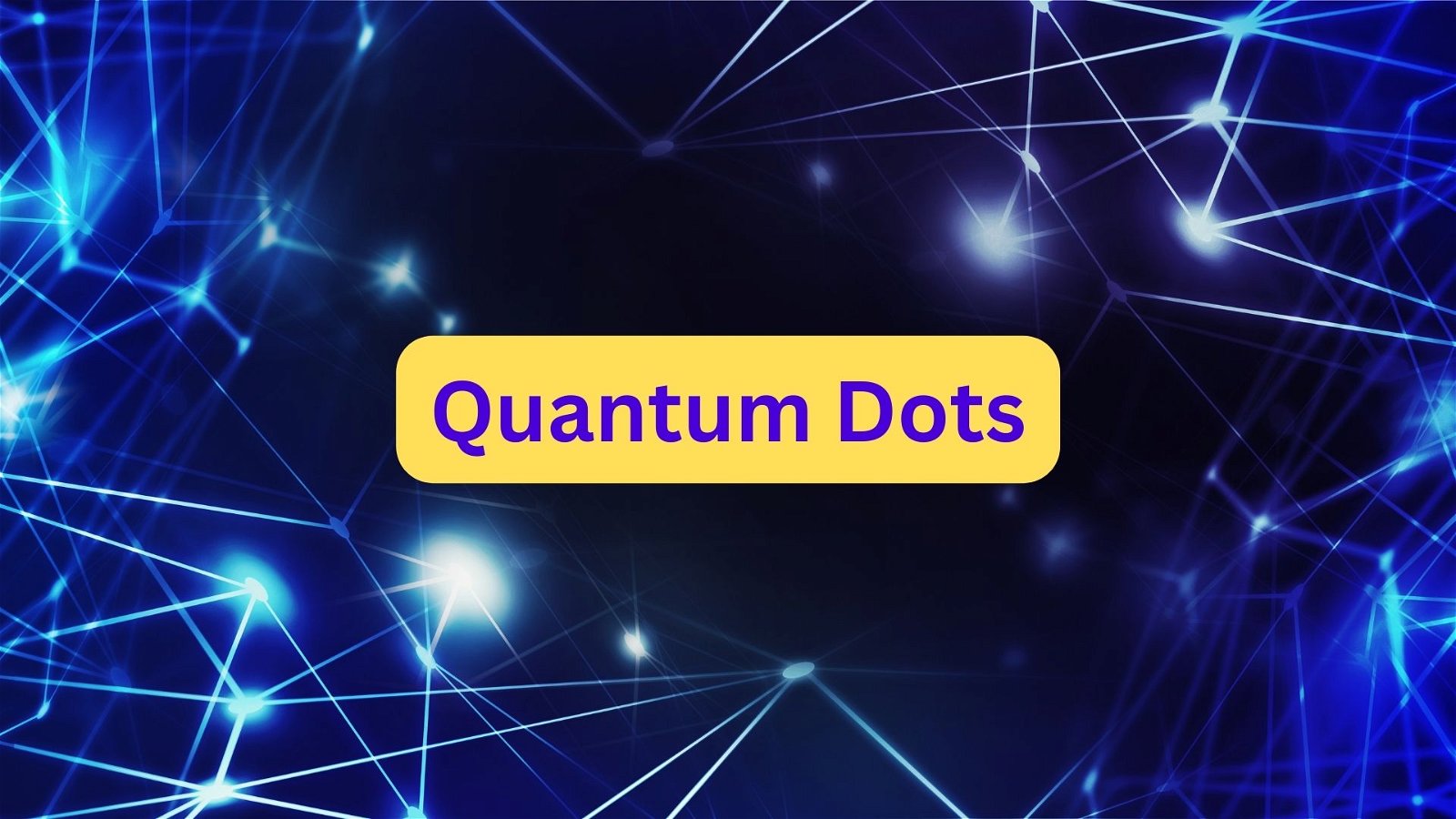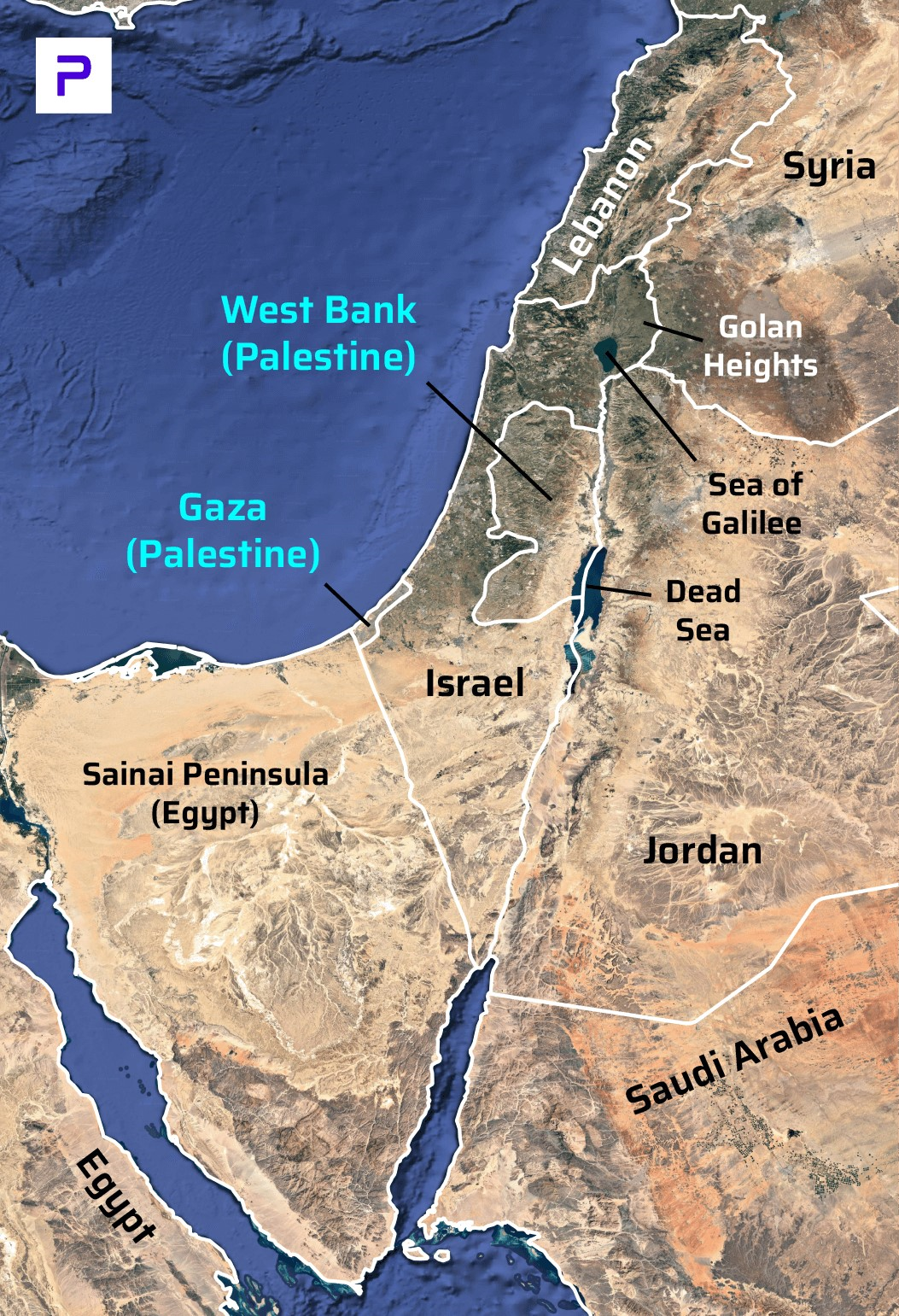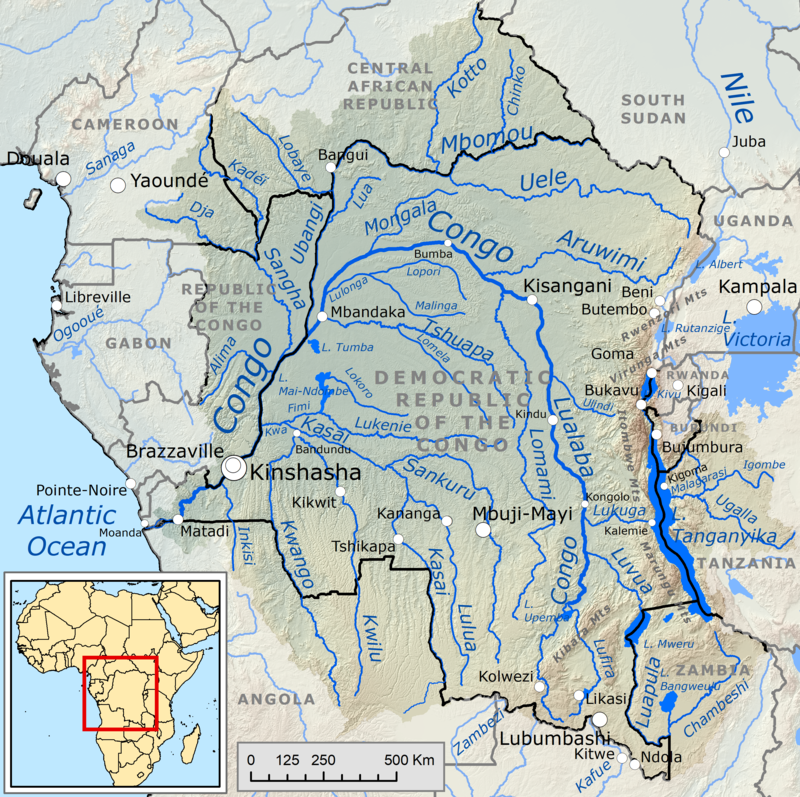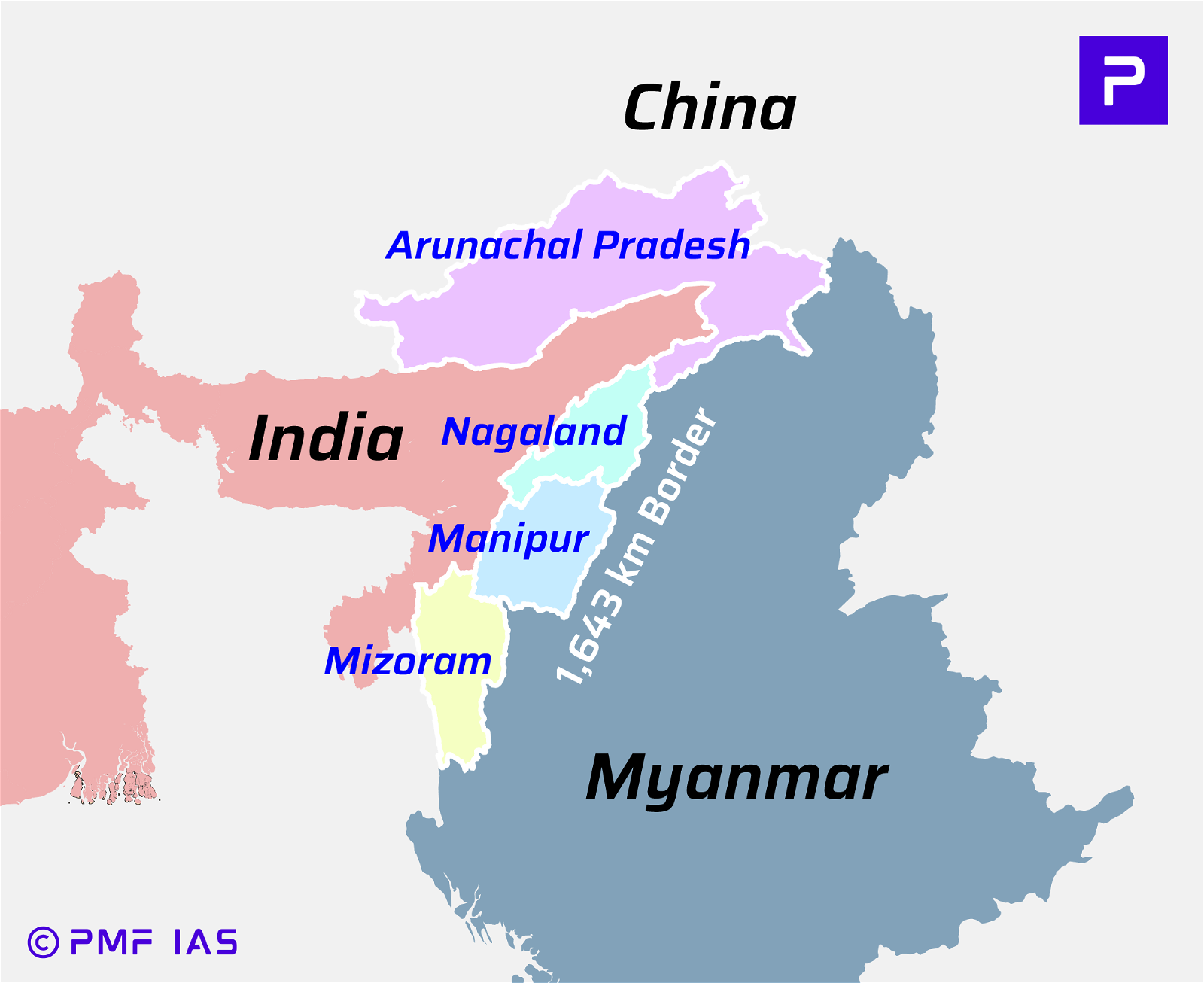
Current Affairs October 05, 2023: Nobel Prize in Chemistry 2023, SC and ST (Prevention of Atrocities) Act 1989, UAPA, Glacial Lake Outburst Flood in Sikkim
Subscribers of "Current Affairs" course can Download Daily Current Affairs in PDF/DOC
Subscribe to Never Miss an Important Update! Assured Discounts on New Products!
Must Join PMF IAS Telegram Channel & PMF IAS History Telegram Channel
{GS1 – A&C – Sites} Bojjannakonda
- Context (TH): Bojjannakonda (Buddina Konda) and Lingalakonda are Buddhist rock-cut caves on adjacent hillocks near Sankaram, Anakapalle of ancient Kalinga in Andhra Pradesh.
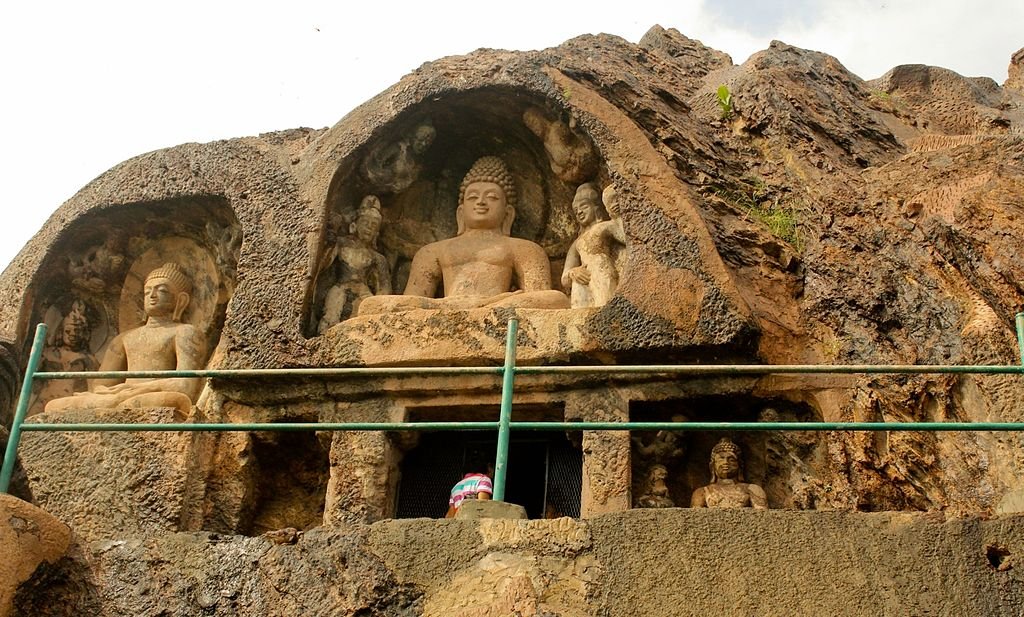

- The sites are believed to date between the 4th and 9th Century A.D., when Buddhism was the majority religion of Sankaram (Sangharam).
- The majestic figures of Buddha in a meditative pose draw visitors to Bojjannakonda.
- This site showcases all three phases of Buddhism, namely Hinayana, Mahayana, and Vajrayana.
- The site is also home to a figure of ‘Kalabhairava’, featuring the head of Lord Ganesha adorned with conch shells and a statue of a Buddhist monk, ‘Harati’.
- Artifacts discovered at the site include a gold coin from the Samudra Gupta era, copper coins of Chalukya king Kubja Vishnu Vardhan, coins from the Andhra Satavahanas period, and pottery.
- The caves at Bojjannakonda bear a resemblance to those in Takshasila.
- The word ‘Sangrama’, common in Takshasila but not in Andhra Pradesh, suggests influences from northern Indian Buddhist practices at Bojjannakonda.
- The Buddhist temple at Barabodur in Java appears to have been built following the architectural style of the structures on Lingala-metta.
Three Phases Of Buddhism
|
{GS2 – MoSJE – Laws} SC and ST (Prevention of Atrocities) Act 1989
- Context (TH): A case is filed against an MP for forcing the Nanded hospital dean to clean the toilet. The case is registered under various acts, including SC & ST (Prevention of Atrocities) Act.
- The Scheduled Castes and the Scheduled Tribes (Prevention of Atrocities) Act, 1989 [SC/ST (POA)] was enacted to prevent and stop crimes against SCs and STs.
- It attempts to prevent the atrocities against SC/ST through three broad means:
- It defines certain crimes against SCs and STs as atrocities.
- Establishment of special courts to try cases registered under the POA.
- States declare atrocity-prone areas (areas with high levels of caste violence) and appoint qualified officers to monitor and maintain law and order.
- The act also provides the punishment for offences of atrocities committed against SCs and STs.
- It is implemented by the respective States/UTs. States/UTs are provided due central assistance under the Centrally Sponsored Scheme for effective implementation of the provisions of the Act.
|
Key Features
- Offender: Any person who is not a member of SC or ST and commits an offence listed in the Act against a member of SC or ST (victim).
- Investigation: Offences under the Act must be investigated by an officer of the rank of Deputy Superintendent of Police (DSP) or above.
- Constitution of Special Courts: For a speedy trial, the State Government, with the concurrence of the CJ of HC, shall establish in each district a special court to try the offences under this Act.
- Nature and Punishment for an offence:
- All offences listed in the Act are cognisable.
- It also prescribes the punishment for neglect of duties by a public servant who is not a member of the SC or ST.
- It provides enhanced punishment for a subsequent conviction.
- The provision of anticipatory bail under Section 438 of the CrPC is not available to an accused.
- Relief and Rehabilitation: It provides for the relief and rehabilitation of the victims of such offences.
|
Anticipatory Bail
|
Monitoring mechanism at the state level
- To review the implementation of the provisions of the PoA Act. The act mandates the setting up of Vigilance and Monitoring Committees at the:
- State Level under the chairpersonship of the Chief Minister.
- District-level under the chairpersonship of the District Magistrate.
- Sub-Divisional Level under the chairpersonship of Sub-Divisional Level Magistrate.
Monitoring mechanism at the central level
- At the Central Level, a committee under the chairpersonship of the Union Minister for Social Justice & Empowerment has been constituted to review the act’s implementation.
SC/ST (PoA) Amendment Act 2015
- New offences of atrocities were added. It includes:
- Garlanding with chappals
- Denying access to irrigation facilities or forest rights
- Dedicating a SC or a ST woman as devadasi
- Abusing in caste name
- Imposing a social or economic boycott
- It added certain IPC offences attracting less than ten years of imprisonment as offences punishable under the PoA Act.
- Addition of presumption to the offences: If the accused were acquainted with the victim or his family, the court would presume that the accused was aware of the caste or tribal identity of the victim unless proved otherwise.
- Role of Court: An exclusive special court must be established at the district level.
- In districts with fewer cases, a special court may be established to try offences.
- The cases must be disposed of within two months.
- Appeals of these courts shall lie with the HC and must be disposed of within three months.
|
- Role of Officers: It specifies the duties of public servants, including registering a complaint/FIR.
SC’s order diluting the provisions of arrest
Overrule vs Reversal
|
SC / ST (PoA) Amendment Act 2018
- The act was amended to nullify the effect of the SC’s judgment of 2018.
- In the amended SC/ST Act, to file FIRs in cases of atrocities on SC and ST:
- No prior approval is required for appointing authorities for senior police officers.
- Preliminary inquiry is not a must.
Centrally Sponsored Scheme for implementation of the PoA Act
|
Issues
- Experts described the Act as an Act with many teeth but seldom bites.
- Policemen have displayed a consistent unwillingness to register offences under the act.
- Although the PoA mandated the creation of Special Courts, only a few states have created separate Special Courts in accordance with the law.
- Merely calling an existing court a special court cannot speed up a trial.
- Judicial bias against Dalits is rampant, and court decisions frequently bear the mark of such bias.
- It does not cover Dalit Christians (converts to Christianity).
- PoA also suffers from a very low rate of conviction.
{GS3 – DM – Floods} Glacial Lake Outburst Flood in Sikkim
- Context (TH | IE | IE | DTE): Due to the outburst of South Lhonak Lake, a glacial lake, flash floods have inundated Sikkim and breached the Chungthang Dam.
Glacial Lake Outburst Flood (GLOF)
- Glacial lakes form when a glacier erodes the land, and the depression is filled by glacial meltwater.
- It typically forms at the foot of a glacier but may form on, in, or under it.
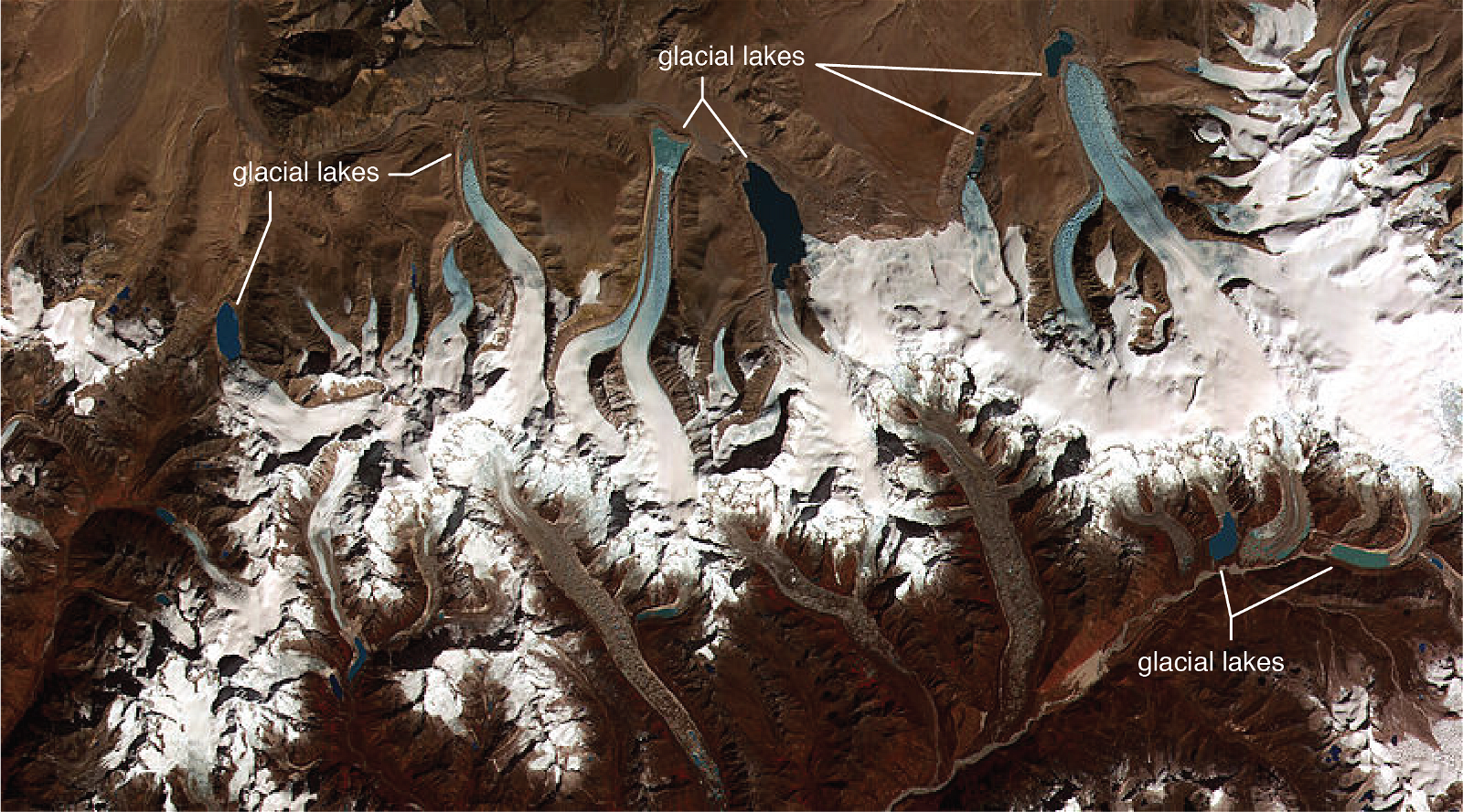
- As glacial lakes grow larger, they become more dangerous because glacial lakes are mostly dammed by unstable ice or sediment.
- In case the boundary around them breaks, huge amounts of water is released causing catastrophic floods downstream. This is called glacial lake outburst floods (GLOF).
- GLOF can be triggered by several reasons, including earthquakes, heavy rains and ice avalanches.
GLOF of South Lhonak Lake
- South Lhonak Lake a located in Sikkim’s far northwestern region.
- It is one of the fastest expanding lakes in the Sikkim Himalaya region, and was a potentially hazardous lakes susceptible to GLOFs.
- The probable causes for the GLOF of South Lhonak Lake are:
- Cloudburst: Excess rainwater from cloudbrust has caused sudden surge in water level due to which the GLOF occurred.
- Nepal Earthquake: GLOF my have been triggered by 6.2 magnitude Nepal Earthquake that occurred a day before.
- Ice Dam Failure: It happens when glacial lake water volume exceeds the dam’s capacity, leading to potential weakening or rupturing of the dam, releasing a torrent of water downstream.
What is a Cloudburst?
|

Consequences of GLOF of South Lhonak Lake
Flash Floods in Sikkim
- GLOF has resulted in a flash flood in the Teesta river basin in Sikkim.
- Thses flash flood has cost human lives and damaged infrastructure.
Flash Flood
|
Chungthang Dam Breach
- The Chungthang Dam breached due to the sheer force and speed of the water from GLOF.
- The huge amounts of water released from the dam further worsened the flooding of Sikkim.
Chungthang Dam
|
Way Ahead
- The series of disasters that occurred in Sikkim after the triggering of GLOF of South Lhonak Lake again proves that cascading hazards are becoming frequent due to climate change and human activities.
- It also reinforced that Himalayan regions are more susceptible to such disasters.
- Addressing these disasters requires an “integrated disaster management approach” that considers the connection between hazards and specific incidents to formulate effective risk-mitigation plans.
|
{GS3 – Envi – Pollutant} Heavy metals
- Context (DTE): High levels of cancer-causing heavy metals such as lead and chromium have been found in eight wetlands in Odisha:
- Natural: Chandaneswar, Chilika, Daringbadi, and Koraput
- Man-made: Bhadrak, Hirakud, Talcher, and Titlagarh
Odisha National Parks, Tiger Reserves, & Ramsar Sites
For more info: Odisha National Parks, Tiger Reserves, & Ramsar Sites – PMF IAS |
Heavy Metals
- Heavy metals are defined as metallic elements with a relatively high density compared to water.
- These metals occur naturally in Earth’s crust, but human activities like industrial processes, mining, and burning fossil fuels have increased their release into the environment.
- Heavy metals cannot be destroyed by biological degradation.
Essential vs. Toxic
- Depending on their concentration and the specific metal, heavy metals can either be essential or toxic to living organisms.
- Essential Heavy Metals: Heavy metals, such as copper, zinc, and iron, are essential micronutrients living organisms require in trace amounts for biochemical and physiological functions. E.g., iron is crucial for oxygen transport in haemoglobin and zinc for enzymatic reactions.
- Toxic Heavy Metals: Heavy metals like lead, mercury, cadmium, arsenic, and chromium can be toxic to living organisms, even at low concentrations. They can cause a range of health problems.
- Cancer
- Neurological damage
- Kidney and liver damage
- Reproductive problems
- Developmental problems in children
Sources of Heavy Metals in Wetlands
- Natural sources: Weathering of rocks and soils, volcanic eruptions, and forest fires.
- Human activities: Mining, industrial wastewater, agricultural runoff, and urban stormwater runoff.
How Heavy Metals in Wetlands Enter the Human Body
- Drinking contaminated water
- Eating contaminated fish
- Breathing contaminated air (Heavy metals can volatilise from wetlands and enter the air. If this air is inhaled, the heavy metals can enter the human body.)
- Skin contact with contaminated water
Heavy Metal Toxicity
Lead
- Lead enters the atmosphere from automobile exhaust.
- Tetraethyl lead (TEL) was added to petrol as an anti-knock agent for the smooth running of engines.
- Lead in petrol is being phased out by the introduction of lead-free petrol.
- Many industrial processes use lead, often released as a pollutant.
- Battery scrap also contains lead. It can get mixed up with water and food and cause poisoning.
- Lead can cause irreversible behavioural disturbances, neurological damage and other developmental problems in young children and babies. It is a carcinogen of the lungs and kidneys.
Mercury
- In Japan, mass mercury poisoning (Minamata disease) was observed in the 1960s, caused by eating fish from Minamata Bay contaminated with methylmercury.
- Mercury kills cells in the body and damages organs, thus impairing their functioning.
- Inhalation of mercury vapours is more dangerous than its ingestion.
- Chronic exposure causes lesions in the mouth and skin and neurological problems.
- Mercury-free thermometers are replacing mercury thermometers used earlier.
Arsenic
- Arsenic is associated with copper, iron and silver ores.
- Arsenic is also emitted from fossil fuel burning.
- Liquid effluents from fertiliser plants also contain arsenic.
- Groundwater contamination with arsenic is very common in areas where it is present.
- Chronic arsenic poisoning causes melanosis and keratosis (dark spots on the upper chest, back and arms are known as melanosis; the next stage is keratosis, in which palms become hard), leading to loss of appetite and skin cancer, etc.
- Surface waters are generally free from arsenic pollution and should be preferred for drinking and cooking.
Cadmium
- Mining, especially in zinc and metallurgical operations, electroplating industries, etc., releases cadmium in the environment.
- It may enter the human body by inhalation or from aquatic sources, including fish.
- It may cause hypertension, liver cirrhosis, brittle bones, kidney damage and lung cancer.
- Itai-itai disease, first reported from Japan in 1965, was attributed to cadmium contamination in water and rice caused by the discharge of effluents from a zinc smelter into a river.
Other Heavy Metals
- Metals such as zinc, chromium, antimony and tin enter food from cheap cooking utensils.
- Preserved foods stored in tin cans also cause contamination by tin.
- Zinc is a skin irritant and affects the pulmonary system.
For more info: 15.7 Heavy Metals PMF IAS Environment
{GS3 – IE – LPG} India’s Economic Policy Quandary
- Context (TP): While emphasising minimum government and maximum governance, the government has extended its reach into multiple sectors of the economy.
Resurgence of Socialist Ideals
- India’s current economic policies align with the socialist mindset that dominated policymaking in the 1950s and early ’60s.
- During this era, the government played a central role in driving economic growth, investment, and cultural development, with the private sector as a willing partner.
- Union government has significantly increased the capital expenditure budget for 2023-24 by 33 percent to Rs 10 lakh crore (3.3 percent of GDP).
- While government investment in capital creation is essential, there is a need for introspection regarding the potential crowding out of the private sector.
Navigating Subsidy-Driven Economic Policies
- The government aims to transform India into a global manufacturing hub, akin to China, by subsidising domestic industries.
- However, India lacks the resources to match China’s level of subsidy, leading to inefficiencies and increased costs of domestically manufactured products.
Ineffectiveness of the “Make in India”
- An illustrative example is the iPhone, which costs considerably more in India than abroad due to the assembly of parts rather than local manufacturing.
- About 90 percent of the iPhone’s components are imported, attracting import duties, highlighting the ineffectiveness of the “Make in India” initiative.
Reducing import dependence through higher taxes on foreign spending
- The government’s pursuit of reducing import dependence has led to higher taxes on foreign spending and the imposition of Tax Collected at Source.
- These measures are reminiscent of pre-liberalization restrictions on foreign exchange, potentially inhibiting economic growth.
Welfare Over Employment
- Instead of focusing on employment generation, the government is increasing subsidies on food and fuel to address economic distress among the less privileged.
- The sustainability of such subsidies and their impact on economic growth remain open questions.
Trade Policies and Import Restrictions
- India’s unpredictable trade policies, including bans and restrictions on essential commodity exports like wheat and rice, have harmed trade partners and raised concerns at the WTO, with repercussions on the agricultural sector.
- Additionally, the government’s decision to restrict the import of laptops and electronics without the necessary licenses (Licence Raj) has faced industry pushback, potentially hindering technological advancement and the ease of business in India.
Risk of Reverting to the Past – Way Forward
- India’s economic progress over the past three decades was from policies that embraced openness to the world. However, the present government’s assertive approach may expose the country to past weaknesses, hindering future economic growth.
- The need for a balanced, sustainable, and market-driven economic strategy is paramount to ensure long-term growth and prosperity for the nation.
{GS3 – IS – Laws} UAPA
- Context (TH): The FIR has been registered against the NewsClick portal, invoking the Unlawful Activities (Prevention) Act (UAPA).
- The main allegation in the FIR against NewsClick is that the news portal allegedly received illegal funding from China routed through the United States.
- The Unlawful Activities (Prevention) Act (UAPA) is an anti-terror act enacted in 1967.
- The original Act dealt with “unlawful” acts related to secession.
- The 2004 amendments expanded the scope, and anti-terror provisions were introduced.
- It was strengthened by the government by the amendments in 2008, 2012 and 2019.
Key Features
- The words terror or terrorist are not defined, but Section 15 defines a terrorist act.
- A terrorist act is any act committed with intent:
- To threaten the unity, integrity, security, economic security, or sovereignty of India.
- To strike terror in the people or any section of the people in India or in any foreign country.
|
- It gives the state more powers compared with the Indian Penal Code (IPC). It gives more time for the state to file chargesheets.
- Conditions for bail are stringent:
- To deny bail under the UAPA, the court must be satisfied that a “prima facie” case exists against the accused.
- Provisions of the act leave very little room for judicial reasoning and make the grant of bail virtually impossible under UAPA.
|
UAPA amendment 2019
- The central government can designate an individual as a “terrorist” if involved in an act of terror.
- Earlier, only organisations could be designated as terrorist organisations.
- Earlier, an investigating officer had to obtain prior permission from the DGP of a state to conduct raids and seize properties suspected to be linked to terrorist activities.
- The amendment removes this requirement if the investigation is conducted by an officer of the National Investigation Agency (NIA). The investigating officer only requires sanction from the Director General of NIA.
- Earlier, only officers of the rank of Deputy Superintendent or Assistant Commissioner of Police of the NIA shall have the power to investigate offences under the UAPA law.
- The amendment allowed NIA officers of Inspector rank to carry out investigations.
{GS3 – S&T – NanoTech} Nobel Prize in Chemistry 2023
- Context (TH | IE | IE): The Nobel Prize in Chemistry 2023 has been awarded to Moungi G. Bawendi, Louis E. Brus and Alexei I. Ekimov for discovering and synthesising quantum dots.
What are Quantum Dots?
- Each element’s properties are defined by its atomic structure, primarily the number and arrangement of electrons around the nucleus.
- All pure elements display consistent properties, regardless of their size. For example, every piece of gold, whether a large 100 gm or a small 10 mg, has the same properties (fundamental facts).
- However, at the nanoscale, when the matter is really small, the electrons are squeezed together, so its properties depend on size.
- Quantum dots are semiconductor nanoparticles that exhibit size and composition-dependent optical and electronic properties.
|
- Quantum dots constitute a new class of materials that is neither molecular nor bulk material.
- They have the same structure and atomic composition as bulk materials, but their properties can be tuned using a single parameter, i.e., the particle’s size.
What did Ekimov, Brus, and Bawendi do?
Dr. Ekimov’s Research
- Dr. Ekimov used copper chloride to colour glass under various heating and cooling conditions.
- He discovered that the glass’s light absorption depended on the particle size of copper chloride.
- Larger particles behaved as expected, but smaller particles absorbed bluer light.
- Ekimov recognised this as a size-dependent quantum effect.
Dr. Brus’s Reseacrh
- Dr. Brus prepared similar size-dependent particles (crystals) of cadmium sulphide in a liquid solution rather than in a glass. This allowed the researchers to manipulate better and study the crystals.
Dr. Bawendi Research
- Dr. Bawendi developed a technique to make these peculiar crystals, i.e. quantum dots, of well-defined sizes and with high optical quality.
What is the Discovery of Quantum Dots Important
- At the nanoscale, quantum dots attain new, size-dependent properties that can be harnessed and controlled for novel applications.
Applications of Quantum Dots
- Optoelectronics and Displays: Quantum dots are used in displays and lighting to enhance colour accuracy, brightness, and energy efficiency. QLED (Quantum-dot Light Emitting Diode) technology has led to the developing of high-quality, vivid displays in televisions and monitors.
- Biological Imaging: Quantum dots are valuable in biological and medical imaging. They offer bright, stable fluorescence for precise cell and biomolecule tracking in living organisms.
- Solar Cells: Quantum dots are studied for use in solar cells to boost efficiency and broaden the light absorption spectrum.
- Quantum Dot Lasers: They are used to develop lasers with low threshold current and tunable emission, which find applications in telecommunications and optical signal processing.
- Quantum Dot Computing: Quantum dots may serve as qubits (quantum bits) in quantum computing, advancing the development of robust, efficient quantum computers.
- Sensors and Detection: Quantum dots can be used in sensors for substance detection and environmental monitoring due to their sensitivity and tunable traits.
- Telecommunications: Quantum dots can amplify and transmit optical signals efficiently.
- Material Science: Quantum dots provide insights into nanoscale quantum effects and material behaviour, driving innovation for novel materials and technologies.
- Energy Storage: Quantum dots are explored for use in energy storage devices (like batteries and supercapacitors), where their unique properties can enhance energy storage and efficiency.
- Drug Delivery: Quantum dots serve as drug delivery carriers in medicine, enabling precise and controlled pharmaceutical release. E.g., cancer treatments.
- Environmental Remediation: Quantum dots have applications in environmental remediation, such as removing pollutants from water and soil through photocatalysis.
- Security and Authentication: Tunable optical properties of quantum dots enhance their value in anti-counterfeiting measures used in document and product security features.
{Prelims – S&T – Defence} VSHORAD missile system
- Context (RW I TH): The Indian Army has procured various Very Short-Range Air Defence Systems (VSHORAD) from DRDO to enhance its capabilities through air defence units.
- It is a Man Portable Air Defence System (MANPAD) designed to counter low-altitude aerial threats over short distances, having a maximum range of 6km and an altitude of 3km.
DRDO – DcPP Policy
- Procuring these VSHORAD missiles falls under the Development cum Production Partner (DcPP) policy, a strategic approach devised by the DRDO.
- Under this policy, DRDO leads the design phase, offering detailed blueprints and technical specifications to private or public sector industries for the prototype’s development.

{Prelims – S&T – Space} BlueWalker 3 satellite
- Context (TH): BlueWalker 3 is a prototype satellite, part of a constellation planned by AST Space-Mobile to deliver global mobile or broadband services.
- It’s one of the brightest objects in the night sky, raising concerns among astronomers due to its potential to disrupt night sky observations.

- The trajectory of the BlueWalker 3 satellite can be calculated, which aids astronomers in avoiding potential interference.
- However, mitigating its brightness is challenging and can lead to data loss for certain sky parts.
- The satellite’s use of wavelengths similar to radio astronomy could also cause interference.
- Researchers emphasise the need for protective telescope strategies against such satellite interference.





![PMF IAS Environment for UPSC 2022-23 [paperback] PMF IAS [Nov 30, 2021]…](https://pmfias.b-cdn.net/wp-content/uploads/2024/04/pmfiasenvironmentforupsc2022-23paperbackpmfiasnov302021.jpg)


